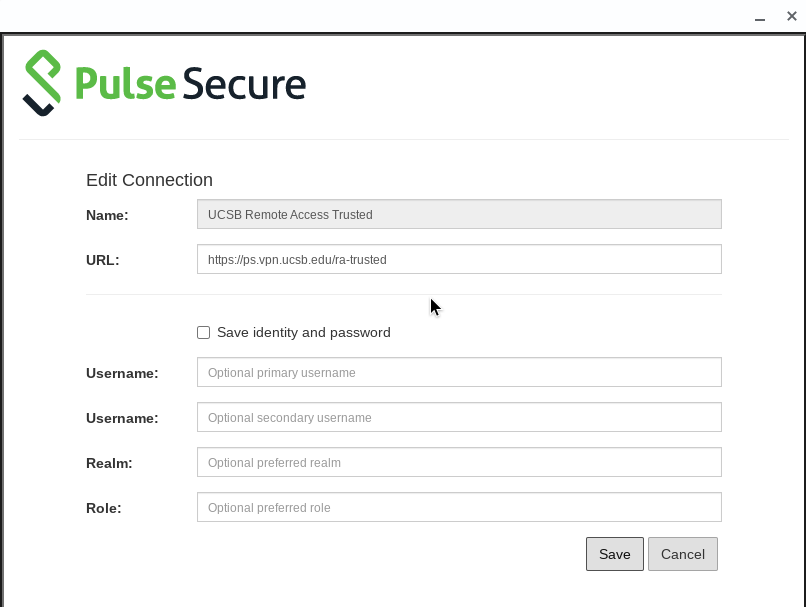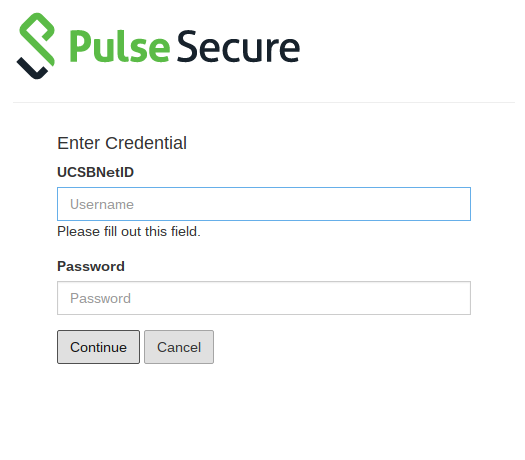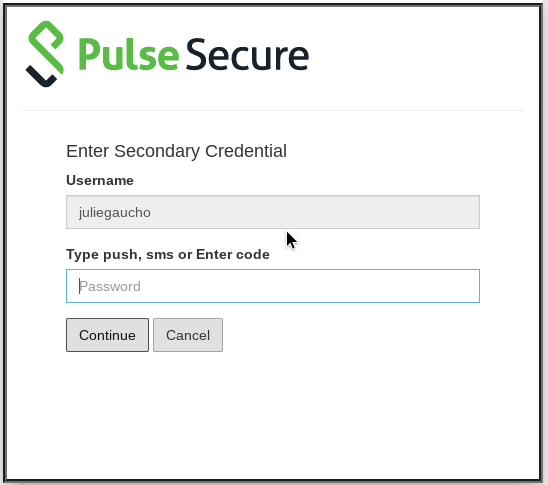Installation
Step 1: Visit the Chrome Web Store. Search for and install the Ivanti Connect Secure client from Ivanti, Inc.

Step 2: Select the VPN Connection menu, click on "VPN disconnected" to create a Ivanti Connect Secure connection profile.

Step 3: Add a connection profile for UCSB Remote Access with the following attributes:
Name: UCSB Remote Access
URL: https://ps.vpn.ucsb.edu/ra
Ensure that you have typed the URL exactly as listed above - http: will not work - it must be https:
Click Save.

Usage
IMPORTANT: you must first have at least one device already enrolled with UCSB's MFA service (Duo Security) in order to connect to VPN.
Use the VPN Connection Menu to enable, disable, and monitor your "UCSB Remote Access Trusted" VPN connection.

Step 1: Open the Pulse Secure VPN client. Click on the "UCSB Remote Access Trusted" profile to make a connection.
Step 2: The first thing you see will be a prompt explaining how to use Duo multi-factor authentication with the VPN client. Once you have read the Pre Sign-in notification carefully, click "Proceed" to begin the authentication process.
Step 3: A window will open prompting you to enter your UCSB NetID and password. Enter your UCSB NetID credentials and click Continue.

Step 4: Once your UCSB NetID credentials have been authenticated, you will be prompted to enter which factor you want to use for multi-factor authentication (MFA).
Please type 'push' (no quotes) in the designated field to get a push notification via the Duo mobile application, or enter a current SMS, Duo, or hard token numerical passcode. Alternatively, you can type 'sms' (no quotes) to receive a new set of codes via SMS message on your phone (login will fail - you will need to authenticate to the VPN again to use the newly received SMS passcodes, which are good for one hour). You have a short period of time after entering this information to approve the Duo push notification or enter your code. Click "Continue."
You can find more about the distinctions in Duo device setup here: https://www.it.ucsb.edu/getting-started-mfa-duo/which-devices-should-i-enroll-mfa-duo.

You have a short period of time after entering this information to approve the Duo push notification or enter your code.
After a few seconds, your client will connect and the "UCSB Remote Access Trusted" profile will be bold. The button next to it should change to "Disconnect" and an arrow icon should show in the taskbar on the bottom of the display.

Step 5: Verify your VPN connection by using a web browser to visit https://next.noc.ucsb.edu/ip
The web page will display the network address your computer is using. If the VPN is in use, it should say "On-campus address (VPN)."
Step 6: To disconnect from the campus VPN service, click the arrow next to the "Connected to UCSB Remote Access Trusted" menu and click the "Disconnect" button
PLEASE NOTE: The Ivanti Connect Secure VPN client on ChromeOS uses SSL for connection transport and does not support automatic re-connection if your VPN session is disconnected for any reason.